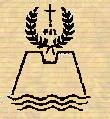|
BAPTISM OF
OUR LORD
(Matthew
3:13-17; Mark 1:7-11; Luke 3:15-21)
John the Baptist first preached
repentance and then invited those who have repented to undergo
Baptism. This shows that the recipients must first have repented or
be possessed with a pure soul before undergoing Baptism. A pure soul
means the recipient wants to know and do God's will over and above
his own will.
So when the Pharisees and Scribes
went to John for Baptism before they even repented, John rebuked
them for they did not have pure souls. To undergo Baptism
without a pure soul is almost useless because without a pure soul
you will end up staining your baptismal grace, rendering the
baptismal grace ineffective.
All men are born with original sin
and, therefore, have the tendency to choose evil over good.
When man actually does choose evil, he stains his soul. Baptism
removes the stain but not the tendency; though Baptism gives us the
ability or power to weaken or totally remove the tendency. But
most Catholics do not know how to use this power to eradicate the
tendency to sin. So we all grow up with the tendency intact. When we
receive Baptism, because the tendency to sin is still there, the
grace of baptism becomes ineffective. We lose it almost as soon as
we receive it.
Knowing well that for most men they
will lose their baptismal grace right away because of their
ignorance in maintaining a pure soul, as in maintaining the pure
soul of a child, or, in the case of an adult, in acquiring a pure
soul, God instituted another sacrament, Penance. As in Baptism, a
pure soul, through a life of repentance, is needed for the grace of
Penance to be effective. Without removing the tendency to sin in
man, one would sin almost immediately after he receives the
sacrament of Penance.
Christ came to teach us how to
remove both the tendency to sin, which is the consequence of
original sin, and the stains of sins. This is accomplished through
obedience to His commands which spiritual writers commonly call a
Life of Repentance. So, as John preached, one must have repented
before going to him for Baptism at the river Jordan, which was not
the case with Christ since He neither had the tendency nor the stain
of sin. So John exclaimed that Christ did not need Baptism.
John himself lost the tendency and,
as a consequence, he had no stain when Mary visited Elizabeth. For a
few months before the visit, he had original sin and,
therefore, the tendency. The tendency in some way had stained
his soul and so he found the necessity of being baptized; "It
is I that must be baptized..."
It is better to remove the tendency
in us through a life of repentance when receiving the sacrament of
Penance. If we do it this way, the sins we confess will never
return. A sign that the tendency is still there is that, after
confession, we fall into the same sin.
Christ was baptized when He was
thirty years old. Thirty had been the symbol of man coming into the
fullness of his sinfulness. It is said that man usually has
committed all the sins by thirty. From birth to 10, man does foolish
things. From 10 to 20, he gives in to the sins of the flesh and
anger. At 20 to 30, he gives in to avarice. Since man, at thirty, is
the picture of the fullness of sin, Christ was baptized at thirty to
show the opposite, the fullness of grace which is possible if , from
the very beginning, man follows Christ by denying himself, taking up
his cross and following Christ.
(updated
03-18-02) |
